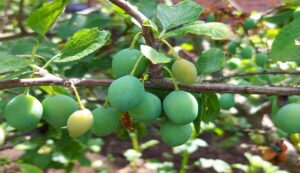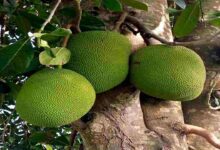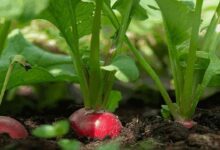Plum Crop: To protect the plum crop from this disease, adopt these best measures
Plum Crop: The plum tree, often referred to as the Chinese apple or Chinese date, is a multifunctional prickly fruit tree. The leaves are used as animal feed, while the fruits are eaten by humans for nutrition and energy. Its wood is used in the production of furniture, firewood, and fences.

Plums have several health and nutritional advantages. It is high in antioxidants, potassium, vitamin C, and vitamin A. It helps to improve digestion, maintain radiant skin, and boost immunity. Plum is also used to strengthen bones, prevent cancer, and treat liver issues.
Powdery mildew disease’s significance in plum cultivation
The prompt management of the powdery mildew disease on plum leaves and fruits is essential for effective plum farming. This disease has a major impact on crop yield, plant development, and the quality of leaves and fruits.
Signs and symptoms of powdery mildew
First signs: Young fruits, leaves, and flowers all have a white, powdery material on them. The powder covers the fruits’ and flowers’ surfaces.
Effects on foliage: Young leaves develop a white, powdery covering that makes them shrink and fall off too soon.
Impact on fruits: Fruits develop a white, powdery layer that eventually becomes brown or dark brown. Fruits that are impacted seem broken, rough, and misshapen. Fruits are often unsellable.
Disease transmission: During the winter, the mildew stays latent in its buds. It becomes active and spreads new infections in the spring when the temperature is between 24 and 26°C and the relative humidity is between 80 and 85%.
Handling the Disease of Powdery Mildew
Disease Prevention
Agricultural practices include routine field cleaning and the removal of infected areas. To ensure good air movement and lower humidity, keep plants at the right distance from one another.
Irrigation Management: To prevent excessive humidity, do not irrigate plants from above.
Fungicide Use
After blooming and fruit setting, apply the first spray, which should be Karathane (1 ml per liter of water) or soluble sulfur (2 g per liter of water).
Second Spray: Fifteen days after the initial spray, apply the aforementioned solution once again.
Adaptive Spray: Apply a second spray 20 days prior to fruit harvesting if there is a significant disease infestation.
Using organic fungicides such as Trichoderma spp. or other antifungal microorganisms is an option. Neem oil spraying may also be beneficial for early disease control.
Resistant Varieties: Choose plum cultivars that are resistant to disease.
The Value of Managing Powdery Mildew
In addition to increasing plum output, effective control of powdery mildew disease also enhances fruit quality. Proper crop care, organic choices, and timely fungicide usage are crucial for this. The production and storage of nutrient-dense, multifunctional fruits like plums depend heavily on this disease control. Farmers may guarantee their financial gains and boost their produce by taking the right steps.

